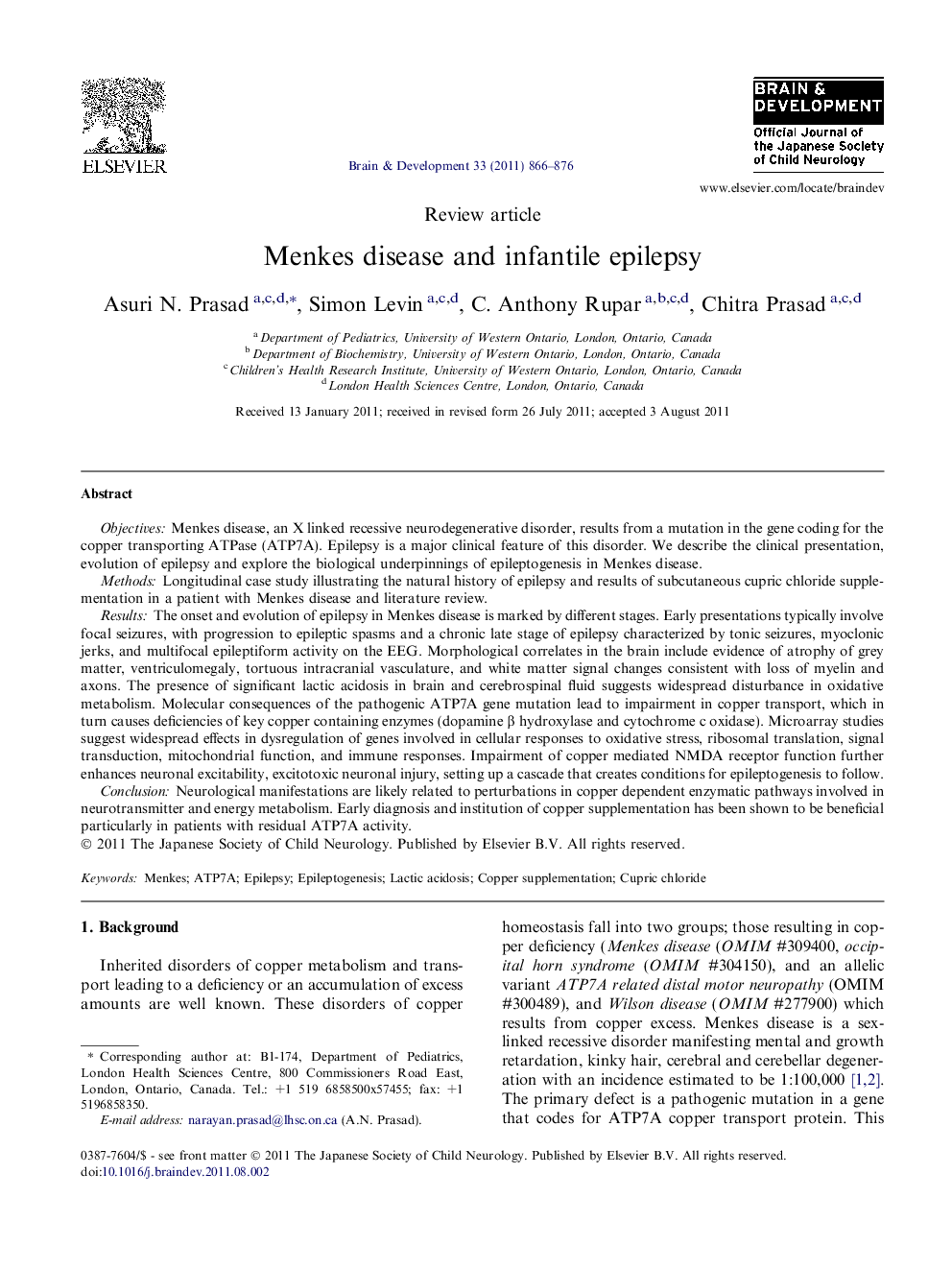| کد مقاله | کد نشریه | سال انتشار | مقاله انگلیسی | نسخه تمام متن |
|---|---|---|---|---|
| 3037282 | 1184408 | 2011 | 11 صفحه PDF | دانلود رایگان |

ObjectivesMenkes disease, an X linked recessive neurodegenerative disorder, results from a mutation in the gene coding for the copper transporting ATPase (ATP7A). Epilepsy is a major clinical feature of this disorder. We describe the clinical presentation, evolution of epilepsy and explore the biological underpinnings of epileptogenesis in Menkes disease.MethodsLongitudinal case study illustrating the natural history of epilepsy and results of subcutaneous cupric chloride supplementation in a patient with Menkes disease and literature review.ResultsThe onset and evolution of epilepsy in Menkes disease is marked by different stages. Early presentations typically involve focal seizures, with progression to epileptic spasms and a chronic late stage of epilepsy characterized by tonic seizures, myoclonic jerks, and multifocal epileptiform activity on the EEG. Morphological correlates in the brain include evidence of atrophy of grey matter, ventriculomegaly, tortuous intracranial vasculature, and white matter signal changes consistent with loss of myelin and axons. The presence of significant lactic acidosis in brain and cerebrospinal fluid suggests widespread disturbance in oxidative metabolism. Molecular consequences of the pathogenic ATP7A gene mutation lead to impairment in copper transport, which in turn causes deficiencies of key copper containing enzymes (dopamine β hydroxylase and cytochrome c oxidase). Microarray studies suggest widespread effects in dysregulation of genes involved in cellular responses to oxidative stress, ribosomal translation, signal transduction, mitochondrial function, and immune responses. Impairment of copper mediated NMDA receptor function further enhances neuronal excitability, excitotoxic neuronal injury, setting up a cascade that creates conditions for epileptogenesis to follow.ConclusionNeurological manifestations are likely related to perturbations in copper dependent enzymatic pathways involved in neurotransmitter and energy metabolism. Early diagnosis and institution of copper supplementation has been shown to be beneficial particularly in patients with residual ATP7A activity.
Journal: Brain and Development - Volume 33, Issue 10, November 2011, Pages 866–876